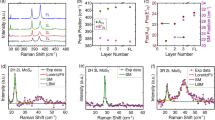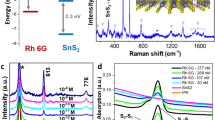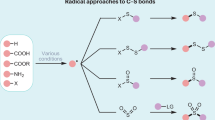Abstract
IT is more or less generally accepted that the various Raman frequencies of a molecule correspond to the oscillations of its component parts with respect to one another, each frequency being associated with one particular mode of oscillation. This conception of the origin of the frequencies is very fruitful in correlating the Raman spectra of molecules with their structure. One particular aspect of the application of this idea has attracted considerable attention during recent years, namely, the assigning of certain frequencies to each type of chemical bond and tracing their variation from compound to compound. We have made a detailed study of the Raman spectra of a number of organic sulphides and we give below the results obtained in two typical cases, ethyl sulphide and allyl sulphide, one representing the saturated and the other the unsaturated compound.
This is a preview of subscription content, access via your institution
Access options
Subscribe to this journal
Receive 51 print issues and online access
$199.00 per year
only $3.90 per issue
Buy this article
- Purchase on SpringerLink
- Instant access to full article PDF
Prices may be subject to local taxes which are calculated during checkout
Similar content being viewed by others
Author information
Authors and Affiliations
Rights and permissions
About this article
Cite this article
THATTE, V., GANESAN, A. Raman Spectra of Organic Sulphides. Nature 127, 306 (1931). https://doi.org/10.1038/127306a0
Issue date:
DOI: https://doi.org/10.1038/127306a0



